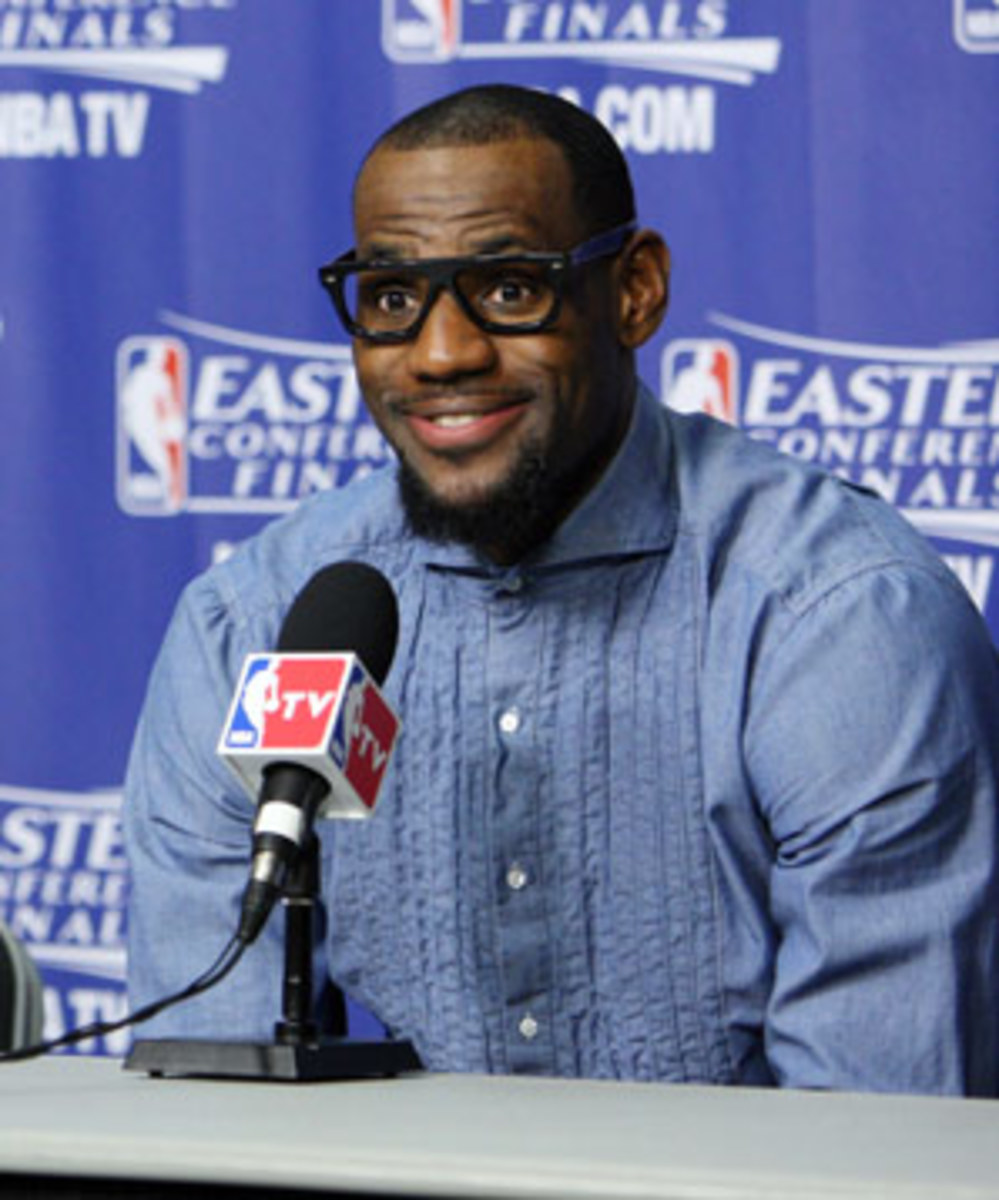
Specs have become a spectacle for many of today's sports stars
For most of history, among the prominent markers separating the spectacle (Babe Ruth, Muhammad Ali, Michael Jordan) from the spectator (you, me, Red Smith) was eyeglasses -- spectacles -- that wardrobe staple of any actor wishing to instantly convey that he is a) a nerd b) a wuss or c) a coddled egghead.
Teddy Roosevelt would beat me with a big stick for saying so, but glasses have always been for weaklings. Or worse, the willfully incompetent, which is why umpires for the last century-and-a-half have been implored to visit the nearest optician for prescriptive lenses.
The absence of glasses, conversely, has always signified athletic prowess. The 20/10 vision of Ted Williams was so acute it engendered an escalating series of legends: That Williams could read the signature of the American League president on a rotating curveball, read the label of a record album spinning at 78 RPM, identify microorganisms without aid of a microscope, read the disclaimer on a pharmaceutical commercial without pausing the DVR.
Or something like that. The point is, a lack of glasses meant peak health, potency, good looks. The movie librarian removing her glasses -- and undoing her hair bun -- was revealed to be suddenly and achingly beautiful. "Men seldom make passes at girls who wear glasses," as Dorothy Parker put it, an aphorism that's no longer true -- if it ever was -- in the age of the Sexy Librarian.
That archetype -- the librarian in the cat-eye glasses -- had its longstanding male equivalent. Mild-mannered nerd Clark Kent removed his horn-rimmed glasses to become Superman. With the glasses back on, he was utterly unrecognizable. It was inconceivable that the guy in the specs could possibly be a superhero.
All of which is preamble to a welcome development in sports, the Supermen of the NBA putting on nerd glasses -- usually non-prescription -- as a style statement after games. LeBron James and Dwyane Wade, rocking specs in press conferences, become the twin offspring of Dr. J and Mr. Magoo. As a result, those of us with the nearsighted foresight to get glasses years ago --eighth grade, in my case -- are now looking fashion forward.
This is a fairly extraordinary shift. No stylists are putting their NBA clients in corrective shoes or orthodontic headgear -- not yet, anyway -- but astigmatism is suddenly hot, and I've got it. To paraphrase Sinatra: Old Four Eyes is back.
Or not exactly back, because it's not like glasses were ever really in, once upon a time. But there have been a few role models over the years for the four-eyed fourth-grader. For four glorious seasons from 1977 to 1980, the Kansas City Royals had an eight-eyed battery of pitcher Paul Splittorff and catcher Darrell Porter.
Pitchers who wore glasses were especially intimidating. Yankee reliever Ryne Duren would sometime throw his first warmup pitch over the catcher's head to the backstop, then pause theatrically to clean his glasses. Gus Triandos of the Orioles came to the plate one night while Duren was on his knees, repairing a hole in the dirt on the mound.
"What's he doing?" Triandos asked.
Yankee catcher Yogi Berra replied, "Trying to find the rubber."
Magic Johnson made passes to men who wore glasses for most of his career, picking out a goggled James Worthy, a black-framed Kurt Rambis or Kareem Abdul-Jabbar, whose non-prescription goggles were made by the same company that made Charger receiver John Jefferson's.
Jefferson actually required corrective lenses -- he abandoned the goggles in favor of contacts in Green Bay in 1983 -- but Jabbar's were no less necessary simply because they weren't prescription. He forgot his goggles at the team hotel before the 1982 NBA All-Star Game in New Jersey and phoned the front desk in a panic, but no one there could get him the goggles in time for the game, during which he scored two points in 22 minutes on 1-for-10 shooting. "I felt funny without them," he said afterward, proving that glasses don't require lenses to help you see.
Perhaps the non-prescriptive glasses of LeBron and D-Wade will have the same placebo effect on them, and athletes will choose to wear their glasses in competition and not just in press conferences.
Or perhaps not. Since Harry Truman, the U.S. has had exactly one president -- George H.W. Bush -- who wore glasses regularly. In May, one of our greatest active athlete advocates for the bespectacled -- nerd-specced A's infielder Eric Sogard -- was optioned to Triple A to make room for Coco Crisp, who has no glasses but awesome hair.
So there is still work to do, and what's always been true remains so: You never get to see Clark Kent and Superman at the same time.




